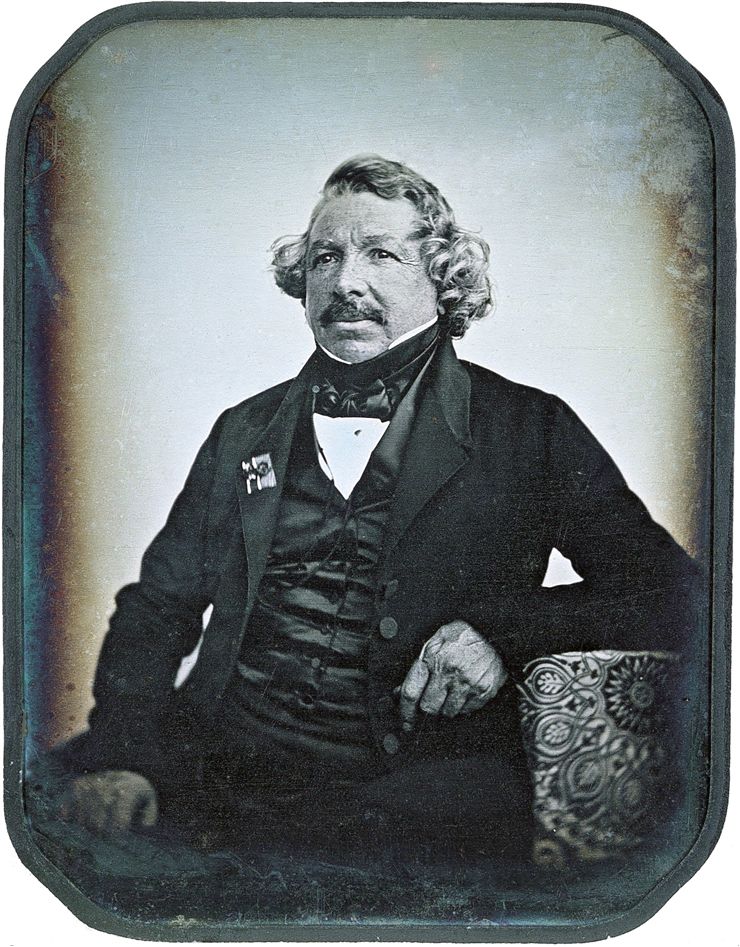Louis Daguerre Biography - Invention of Daguerreotype
Louis-Jacques-Mandé Daguerre (1787 - 1851) was a French artist, painter, photographer, and developer of the diorama theatre. He is most famous for developing the daguerreotype, one of the earliest successful photography methods.
Louis Daguerre was born on November 18th, 1787 in Cormeilles-en-Parisis, Val-d'Oise, in France. He collected his knowledge through apprenticeships and did it in architecture, theatre design, and panoramic painting. Inspired by camera obscura, he tried to find a way to preserve the image that it creates. He heard about Nicéphore Niépce, who also experimented with photography, and they partnered in 1829 with the idea of improving the photographic process. Niépce invented the heliograph, which used a plate covered with the Bitumen of Judea, which hardened when exposed to light. Soft parts were easy to remove, but the plate had to be exposed for hours or days, and the whole process was not too practical. When Niépce died in 1833, Daguerre continued with experiments and shifted his focus from bitumen to silver salts which are also light-sensitive. He used a thin silver-plated copper sheet and exposed it to the vapor given off by iodine crystals, giving him a layer of light-sensitive silver iodide on the surface. This process he called daguerreotype, and at first, it also needed long periods of exposure to show an image. Later he found out that an invisible faint image (called “latent image”) that results from a much shorter exposure can be chemically developed into a visible image if it is exposed to vapors given off by mercury heated to 75°C. The image is fixed after washing the plate in a hot saturated solution of common salt. With further experimenting, Daguerre found that a mild sodium thiosulfate solution works better and is much less poisonous. The resulting image is mirrored, and dark parts of an image have a reflective surface and must be held in a way that reflects dark color. They were often cased in glass to prevent tarnishing that appeared if a daguerreotype was exposed to air for too long. At first, exposure had to be 10 minutes or more, but in a few years, Daguerre managed to shorten it to just a few seconds by using different chemicals and “fast lenses.”
Daguerre went public with his invention in 1839 but at first without explaining how his process worked. He presented it to the French Academy of Sciences on 7 January. Academy's perpetual secretary François Arago received a full explanation about the principle but only under strict confidentiality. French Government was given rights for the daguerreotype in exchange for lifetime pensions for Daguerre and Niépce's son Isidore. On 19 August 1839, the French Government gave rights for daguerreotype “free to the world” together with complete working instructions. In 1939, the National Academy of Design gave Louis Daguerre the title of an Honorary Academician.
Besides photography, Daguerre worked on dioramas and invented them with Charles Marie Bouton. They were scenes that, when illuminated from the front, showed one scene and, when illuminated from the back, showed another. For instance, trains would move and then crash, or scenes would show the landscape before and after the earthquake. The first diorama theatre opened on 11 July 1822. It showed two dioramas - one Daguerre’s and the other Bouton’s, which in time became standard, and one would always present the interior while the other present landscape. These dioramas were not toys but large scenes. Some scenes were 20 meters wide and 14 meters high and were watched by audiences of around 350 people. Bouton eventually withdrew and left the diorama theater to Daguerre.
Louis Daguerre died on July 10th, 1851, in Bry-sur-Marne from heart failure.
